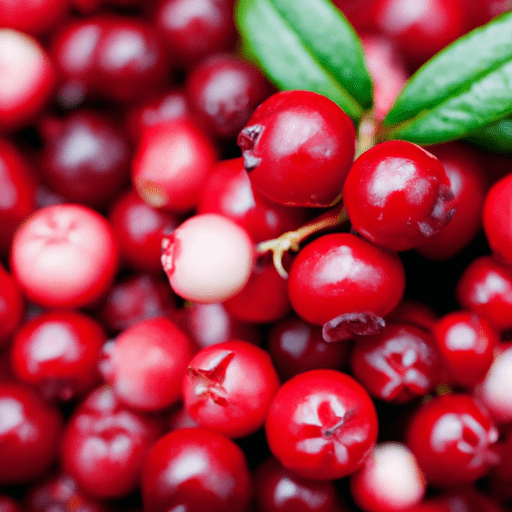Cooking with Cowberries: An Exquisite Berry of the North
If you are a culinary adventurer or simply love experimenting with unique ingredients, then cowberries are a must-try! These vibrant, tart berries are a true gem of the northern regions, boasting a distinct taste that enriches a variety of dishes. In this blog post, we will delve into the wonderful world of cowberries, exploring their flavor profile, common uses in cooking, nutritional value, and intriguing historical background. So grab your apron and let’s get cooking with cowberries!
Taste Sensations
Cowberries, also known as lingonberries or mountain cranberries, offer food enthusiasts a delightful burst of flavors. These berries balance a tangy and tart taste with a hint of sweetness, creating a unique culinary experience. Imagine a blend of bright cranberries with the refreshing zest of citrus fruits. Cowberries add a vibrant punch to recipes, enhancing both sweet and savory dishes with their distinctive flavor.
Versatile Culinary Companions
From traditional Scandinavian cuisine to modern gourmet creations, cowberries have secured a special place in the hearts of chefs and home cooks alike. These versatile berries lend themselves to a wide array of culinary applications. Here are some popular ways to utilize the potent flavor of cowberries:
Sauces and Jams: Cowberries make exceptional sauces and jams. Their natural acidity pairs wonderfully with rich meats like venison or turkey, balancing out the flavors while adding a touch of vibrant color. Additionally, cowberry jams are the perfect accompaniment to freshly baked bread or scones.
Beverages: Infusing cowberries into cocktails, juices, and teas elevates their profile and adds a refreshing twist. The tangy notes complement the sweetness of drinks, providing a delightful contrast that tantalizes the taste buds.
Baking: Incorporating cowberries into baking recipes adds a delightful tang and visually pleasing pops of color. Whether it’s a sweet cowberry tart, a tangy compote swirled into cheesecake, or a fluffy cowberry-infused muffin, these berries bring a unique and irresistible element to any dessert.
Pickles and Chutneys: The tartness and robust flavor of cowberries make them an excellent choice for pickling or preparing chutneys. They add depth and complexity to condiments, giving a delightful zing to sandwiches, charcuterie boards, and cheese platters.
Nutritional Superstars
Not only do cowberries contribute exquisite flavors to dishes, but they also pack a nutritional punch. These crimson berries are rich in beneficial vitamins and minerals, making them a healthy addition to your diet. Here are some key nutritional highlights of cowberries:
Vitamin C: Cowberries are a fantastic source of vitamin C, aiding in strengthening the immune system and promoting overall well-being.
Antioxidants: Packed with antioxidants, cowberries help combat cell damage caused by harmful free radicals, reducing the risk of chronic diseases.
Fiber: These berries are an excellent source of dietary fiber, assisting in digestion and promoting cardiovascular health.
A Glimpse into Cowberry History
Cowberries have a fascinating historical background, deeply rooted in northern regions. In Scandinavia, they have been a staple ingredient for centuries. Traditionally, cowberries were gathered from the wild and incorporated into local dishes. The berries’ tangy taste served as a complement to rich and fatty foods, providing balance and freshness to meals.
Moreover, cowberries play a significant role in cultural celebrations in many Nordic countries. For instance, in Sweden, the “lingon” sauce is a staple accompaniment to the famous Swedish meatballs, adding a burst of flavor and color to this iconic dish.
Embrace the Cowberry Adventure!
Now that you’ve discovered the wonders of cowberries, it’s time to embark on your own culinary adventure. Experiment with their tangy notes and invigorate your favorite recipes with these vibrant berries. Whether you’re indulging in a jar of homemade cowberry jam or impressing your guests with a mouthwatering cowberry-infused sauce, these berries are sure to delight and inspire.
So, next time you spot cowberries at your local market or find them growing wild in the northern countryside, seize the opportunity to bring their remarkable flavors into your kitchen. Unleash your culinary creativity and savor the joy of cooking with these exquisite berries from the north!
Cowberries
Origin: Cowberries, also known as lingonberries, are native to the northern regions of Europe, North America, and Asia. They are particularly abundant in Scandinavia, where they have been harvested for centuries.
Common Uses: Cowberries are widely used in culinary traditions across Scandinavia, where they are a popular ingredient in both sweet and savory dishes. They are commonly made into jams, jellies, and sauces, and are often served alongside traditional Scandinavian dishes such as meatballs and fried herring. In addition to their use in traditional cuisine, cowberries are also used in modern dishes like smoothies, cocktails, and baked goods.
Nutritional Benefits: Cowberries are low in calories and fat but are rich in vitamins and minerals. They are a good source of vitamin C, vitamin E, and several B vitamins. Cowberries also contain antioxidants and have been associated with potential health benefits, including improved cardiovascular health and reduced inflammation.
Unique Properties: Cowberries have a unique tart and slightly acidic flavor, which adds a pleasant contrast to many dishes. They contain natural pectin, a substance that helps thicken sauces and jellies. Cowberries are also known for their ability to retain their shape and texture during cooking, making them ideal for use in various recipes.
Historical Significance: Cowberries have been utilized by Nordic cultures for centuries. In Scandinavian folklore, cowberries were believed to have special powers and were often used in rituals and celebrations. They were also traditionally used for their medicinal properties, such as treating urinary tract infections and digestive issues. Today, cowberries continue to be an integral part of Scandinavian cuisine and culture.




Use the share button below if you liked it.
It makes me smile, when I see it.